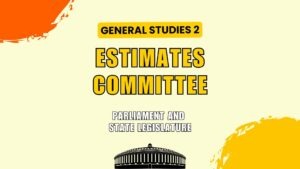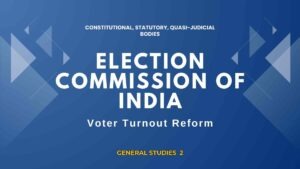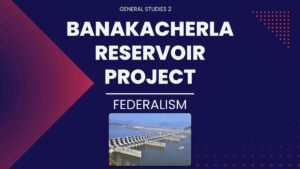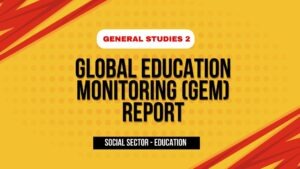Viksit Bharat Ka Amrit Kaal Report - Important Notes for UPSC
Viksit Bharat Ka Amrit Kaal Report
📌 In News:
The Government of India released a report marking 11 years of governance under PM Narendra Modi, titled “Viksit Bharat Ka Amrit Kaal: Seva, Sushasan, Garib Kalyan ke 11 Saal.”
The report encapsulates achievements in inclusion, governance, infrastructure, women empowerment, agriculture, youth, and digital transformation.
🔑 THEMATIC OVERVIEW & UPSC RELEVANT SECTORS:
I. 👥 Serving the Poor and Marginalized – “Antyodaya”
Theme: Inclusive development through 100% welfare saturation and irreversible empowerment.
Key Welfare Metrics:
81 crore beneficiaries under PMGKY (free foodgrains).
52.5+ crore MUDRA loans, with >50% to SC/ST/OBC.
15 crore households connected via Jal Jeevan Mission.
4 crore homes built under PMAY-Gramin.
Flagship Initiatives:
PM Garib Kalyan Yojana, Stand Up India, Namaste Scheme (for sanitation workers), Aspirational Districts Programme.
Achievements:
Extreme poverty eradicated (IMF report).
Multidimensional Poverty Index (MPI) improved (UNDP).
112+ Aspirational Districts exceeded state averages.
Value Addition for Mains:
Example for GS2: Welfare Schemes, Social Justice
Quote usage: “Antyodaya ensures the last mile is not the last priority.”
II. 🌾 Farmer Welfare – “Beej Se Bazaar Tak”
Theme: Holistic agricultural reforms with farmer-centric infrastructure and market integration.
Key Stats:
₹3.7 lakh crore transferred under PM-Kisan.
MSP procurement up: Pulses by 7350%, oilseeds by 1500%.
e-NAM linked 1,473 mandis.
₹1 lakh crore under Agri Infra Fund.
Initiatives:
PMFBY, PMKSY, Soil Health Card, Shree Anna (Millets) promotion.
Outcomes:
Foodgrain output: 347 MMT (2024–25).
Milk production up by 63.56%.
Processed food exports doubled to $9.03 bn.
1943 agri-startups supported (RKVY).
GS3 Relevance:
Agriculture, Food Security, Infrastructure.
III. 👩🦰 Nari Shakti – Lifecycle Empowerment
Theme: Empowerment in education, economy, health, and leadership.
Key Stats:
35.38 crore MUDRA loans to women (₹14.72 lakh cr).
10 crore women in 90 lakh SHGs, 3 crore targeted as Lakhpati Didis.
Sex Ratio at Birth improved to 1020:1000.
77 crore+ sanitary pads via Jan Aushadhi.
Policies/Initiatives:
Mission Shakti, PMMVY, Ujjwala Yojana, Beti Bachao Beti Padhao, Mahila Samman Savings Certificate.
Outcomes:
26-week paid maternity leave.
73% of PMAY-Gramin homes have women ownership.
50,000+ startups have women directors.
UPSC Angle:
GS2 (Women Issues) and Essay paper (Empowerment).
IV. 👨🎓 Youth – “Amrit Peedhi”
Theme: Skilling, entrepreneurship, education & sports for demographic dividend.
Highlights:
1.6 crore youth skilled (PMKVY).
6,500 new IIT seats, 23 IITs, 23 AIIMS.
1.6 lakh startups created 17.6 lakh jobs.
490 new universities opened.
Key Schemes:
NEP 2020, Startup India, Agnipath, Rozgar Mela, Khelo India, TOPS.
Achievements:
DPIIT-recognized startups gave 4.8 lakh direct jobs.
EPFO added 8.59 crore formal jobs since 2017.
61 Olympic/Paralympic medals.
Relevance:
GS2 (Education & Human Resource), GS3 (Startups & Innovation), Essay on youth.
V. 🏠 Middle Class – Ease of Living
Theme: Improving urban living through housing, connectivity, digital services & tax reforms.
Data Points:
4 crore homes under PMAY.
Metro in 23 cities (vs 5 in 2014).
46 crore UPI users, 6.5 crore merchants.
5G in 99.6% districts in just 22 months.
Schemes:
RERA, SWAMIH, UMANG, UDAN, GST, Svamitva Yojana.
Achievements:
1.5 crore citizens flew under UDAN (affordable air travel).
₹37,000 crore unlocked under SWAMIH for stalled housing.
Data cost reduced by 97%.
52 crore Digilocker users.
UPSC Links:
GS2 (Urban Development), GS3 (Infrastructure).
VI. 🏥 Healthcare – Universal Access
Theme: Robust health infra & financial protection for all.
Key Stats:
9 crore Ayushman Bharat admissions worth ₹1.3 lakh crore.
77 crore ABHA health accounts.
220 crore COVID-19 vaccine doses.
1.18 lakh MBBS, 74,000 PG seats.
Schemes:
Ayushman Bharat, Jan Aushadhi, e-Sanjeevani, Mission Indradhanush, PM-ABHIM, NMC.
Outcomes:
16,000+ Jan Aushadhi Kendras saved ₹38,000 crore.
37+ crore teleconsultations.
Maternal Mortality Rate fell from 130 to 80 per lakh.
AIIMS in Northeast; 2,045 medical colleges.
UPSC Perspective:
GS2 (Health), Essay (Social Sector reforms).
Mains-Based Questions on Viksit Bharat Ka Amrit Kaal Report
Q1.
“Antyodaya lies at the heart of India’s inclusive development model.”
Discuss in light of welfare measures adopted over the last decade. (GS Paper 2 – Governance, Welfare Schemes)
Answer Framework:
Introduction:
Define Antyodaya: A Gandhian ideal and Deendayal Upadhyay’s philosophy of uplifting the “last person”.
Mention how this vision aligns with the government’s approach in the Amrit Kaal.
Body:
A. Key Antyodaya-Driven Schemes and Data:
PMGKY: Free foodgrains to 81 crore people.
PMAY-Gramin: 4 crore houses.
Jal Jeevan Mission: 15 crore rural households connected to tap water.
PM SVANidhi: 68 lakh street vendors supported.
MUDRA/Stand-Up India: >50% beneficiaries from SC/ST/OBC categories.
B. Structural Empowerment:
Financial inclusion (Jan Dhan, Aadhaar, Mobile trinity).
Health (Ayushman Bharat, Jan Aushadhi Kendras).
Digital delivery of services (UMANG app, Digilocker).
C. Impact:
IMF and UNDP indicators: India has eliminated extreme poverty.
Over 112 Aspirational Districts outpaced state averages.
Conclusion:
India’s welfare architecture in the Amrit Kaal exemplifies “Sabka Saath, Sabka Vikas” through universal access and targeted empowerment.
Future focus: Quality enhancement and data-driven delivery.
Q2.
Evaluate the progress of India’s agricultural sector under the “Beej se Bazaar Tak” vision. What challenges remain? (GS Paper 3 – Agriculture, Economy)
Answer Framework:
Introduction:
“Beej se Bazaar Tak” signifies the full-cycle reform in agriculture – from input support to market linkages.
Mention context: Amrit Kaal’s focus on doubling farmer income and modernizing agriculture.
Body:
A. Achievements:
PM-KISAN: ₹3.7 lakh crore direct benefit transfers.
MSP procurement up: Pulses by 7350%, Oilseeds by 1500%.
e-NAM: 1,473 mandis integrated.
Agri Infra Fund: ₹1 lakh crore for logistics, cold chains.
Shree Anna Mission: International Year of Millets (2023).
RKVY: 1943 agri-startups supported.
B. Outcomes:
Foodgrain output: 347 MMT.
Processed food exports doubled to $9.03 bn.
63.56% rise in milk production.
C. Challenges:
Small landholdings and productivity gaps.
Market inefficiencies and middlemen control.
Climate change impacts on crops and yields.
Regional disparities in MSP access.
Dependence on subsidies vs long-term reform.
Conclusion:
Strong foundation laid, but must now focus on climate-smart agriculture, water-use efficiency, and value-chain integration.
Q3.
“Women-led development is no longer a slogan but a reality.”
Critically examine the policy initiatives and outcomes driving Nari Shakti in recent years. (GS Paper 2 – Women Empowerment)
Answer Framework:
Introduction:
Begin with the concept of women-led development replacing women-centric development.
Reference lifecycle-based empowerment approach in the report.
Body:
A. Policy Initiatives:
MUDRA Loans: 35.38 crore loans to women (68% of total).
SHGs & Lakhpati Didis: 10 crore women involved, 3 crore targeted as micro-entrepreneurs.
Paid Maternity Leave: Extended to 26 weeks.
Ujjwala Yojana, PMMVY, Mission Shakti, Mahila Samman Savings Certificate.
B. Outcomes:
Sex Ratio at Birth: Improved to 1020:1000.
Institutional Deliveries & MMR: Significant improvement.
PMAY Ownership: 73% houses in women’s names.
Entrepreneurship: 50,000 startups with a woman director.
C. Critical Analysis:
Positive progress in access, participation, and visibility.
Gaps in safety, representation in corporate/governance leadership.
Skilling & digital literacy still uneven.
Conclusion:
India’s model can be a global example if economic, social and digital empowerment of women is deepened alongside mindset change.
Q4.
Discuss the impact of digital infrastructure on improving the quality of life of India’s middle class. (GS Paper 2/3 – Governance, Technology)
Answer Framework:
Introduction:
Define the growing middle class and its aspirations (housing, services, mobility, digital access).
Digital India as a key enabler during Amrit Kaal.
Body:
A. Digital Platforms for Public Services:
UMANG App: 2297+ government services digitized.
DigiLocker: 52 crore users; digital certificates.
UPI: 46 crore users; seamless digital transactions.
5G rollout: 99.6% districts in 22 months.
B. Housing and Mobility:
4 crore homes under PMAY.
Metro expansion: From 5 to 23 cities.
SWAMIH Fund: ₹37,000 crore to revive stalled real estate.
C. Empowerment through Financial Inclusion:
New Tax Regime: Relief for salaried taxpayers.
GST simplification, Svamitva Yojana for rural property titles.
Conclusion:
The middle class has become a digital citizen—empowered, connected, and participatory.
Further reforms needed in education, health, and employment security.
Q5.
How has India’s approach to public health changed post-pandemic? Discuss with reference to Amrit Kaal healthcare initiatives. (GS Paper 2 – Health)
Answer Framework:
Introduction:
COVID-19 as a turning point for healthcare expansion and digitization.
India shifted from reactive to proactive and preventive care.
Body:
A. Infrastructure and Capacity Building:
220 crore+ vaccine doses administered.
1.18 lakh MBBS and 74,000 PG seats.
AIIMS expansion: Especially in the Northeast.
B. Digital and Affordable Healthcare:
Ayushman Bharat: 9+ crore hospital admissions (₹1.3 lakh cr).
ABHA Cards: 77 crore health IDs.
e-Sanjeevani: 37 crore+ teleconsultations.
C. Jan Aushadhi & Financial Protection:
16,000+ Jan Aushadhi Kendras saved ₹38,000 crore.
PM-ABHIM for health infrastructure.
D. Health Indicators Improvement:
MMR dropped from 130 to 80.
Institutional deliveries increased.
Conclusion:
India is moving toward Universal Health Coverage with digital-first, inclusive, and low-cost models.
Focus ahead: rural access, quality care, and preventive health.
Prelims Questions based on Viksit Bharat Ka Amrit Kaal Report
-
Special Economic Zones Rules – Important UPSC Notes
The Government of India has recently relaxed certain provisions of... -
National Conference of Estimates Committees – Important UPSC Notes
Lok Sabha Speaker inaugurated the National Conference of Estimates Committees... -
Election Commission of India – Important UPSC Notes
The Election Commission of India (ECI) has launched a tech-driven... -
Banakacherla Reservoir Project – Important UPSC Notes
A fresh inter-state water dispute has arisen between Andhra Pradesh... -
India-Japan Maritime Relation – Important UPSC Notes
India and Japan have intensified bilateral maritime collaboration (India-Japan Maritime... -
UNESCO Global Education Monitoring (GEM) Report
The UNESCO Global Education Monitoring (GEM) Report 2024–25 highlights that... -
Registered Unrecognised Political Parties – Important UPSC Notes
The Election Commission of India (ECI) has initiated the delisting... -
Viksit Bharat Ka Amrit Kaal Report – Important UPSC Notes
Viksit Bharat Ka Amrit Kaal Report - Important Notes for...









